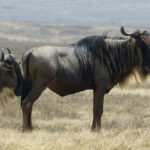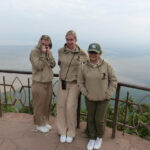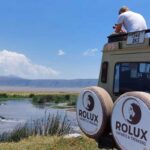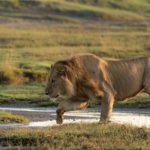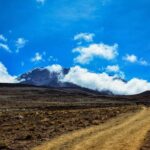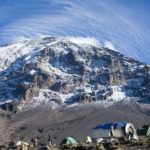Tanzania Wildlife Conservation 2025
Tanzania is one of the most biodiverse countries in Africa, home to iconic wildlife like elephants, lions, giraffes, and rhinos. As a leading destination for safari tourists, it’s crucial for the country to implement strategies to protect its rich natural heritage. With increasing human encroachment and climate change, Tanzania faces numerous challenges in preserving its wildlife. However, in 2025, there are several exciting initiatives and regulations that reflect the country’s commitment to conservation.
This article explores the key methods Tanzania uses to protect its wildlife, including innovative policies, partnerships, and technologies.
Introduction: The Importance of Wildlife Conservation in Tanzania
Tanzania is famous for its national parks and wildlife reserves, including the Serengeti and Ngorongoro Crater, both of which host vast populations of animals. The tourism industry, heavily reliant on safaris, contributes significantly to the country’s economy.
However, these animals are under threat from factors such as poaching, habitat loss, and human-wildlife conflict. In 2025, the government, NGOs, and local communities are working together to safeguard these precious species.
Key Challenges Facing Tanzania’s Wildlife in 2025
Before diving into the strategies protecting wildlife, it’s important to understand the ongoing challenges:
1. Poaching
Poaching remains a significant threat to Tanzania’s wildlife, particularly elephants and rhinos. Despite efforts to combat illegal hunting, organized poaching syndicates still target these species for their tusks and horns.
2. Habitat Destruction
As Tanzania’s population grows, human settlements and agriculture are encroaching on wildlife habitats. The expansion of roads, settlements, and farms threatens vital ecosystems.
3. Human-Wildlife Conflict
As wildlife comes into closer proximity to human settlements, there’s a growing conflict between animals and local communities, particularly in areas like the Serengeti.
Tanzania’s Wildlife Conservation Strategies in 2025
In 2025, Tanzania is making substantial progress in tackling these issues by introducing new conservation strategies. Here’s how the country is protecting its wildlife:
1. Anti-Poaching Efforts
Tanzania has ramped up its anti-poaching measures through technology, training, and enforcement.
-
Drones and Aerial Surveillance: The use of drones to monitor wildlife areas has improved significantly. These drones can detect poaching activities and alert rangers to respond quickly.
-
Smart Anti-Poaching Technologies: Tanzania is adopting smart collars for endangered animals, like elephants, which transmit real-time data to authorities. These collars help track movements, detect poaching attempts, and even trigger alerts if animals enter poaching zones.
-
Training Ranger Units: More funding is being allocated to train wildlife rangers in advanced tracking and enforcement techniques, ensuring that they can effectively counter poaching threats.
2. Wildlife Corridors and Protected Areas
In 2025, Tanzania has established several new wildlife corridors and expanded protected areas to ensure that wildlife can roam freely without the risk of running into human settlements.
-
Establishment of New Protected Zones: The government has expanded the Selous Game Reserve, creating more room for elephants, lions, and other wildlife.
-
Connecting Wildlife Corridors: Creating links between parks such as the Serengeti National Park and Tarangire National Park allows animals to migrate freely, reducing the risk of inbreeding and ensuring healthier populations.
3. Community Engagement in Conservation
Local communities are key players in conservation efforts. In 2025, Tanzania has strengthened its efforts to involve local communities in wildlife protection through initiatives such as:
-
Community Wildlife Conservation Programs: These programs incentivize communities to engage in wildlife conservation by offering sustainable livelihoods like eco-tourism, guiding, and selling handmade crafts.
-
Compensation for Crop Losses and Livestock Predation: The government now compensates farmers and herders who lose crops or livestock to wildlife, helping reduce conflicts and fostering peaceful coexistence.
4. Anti-Trafficking Initiatives
To combat wildlife trafficking, Tanzania has teamed up with regional and international organizations to dismantle illegal wildlife trade networks.
-
Collaboration with Neighboring Countries: Tanzania works with neighboring countries like Kenya and Mozambique to strengthen border controls and prevent the illegal export of wildlife products.
-
Stricter Penalties for Traffickers: The government has imposed tougher penalties for those involved in trafficking wildlife or wildlife products, including lengthy prison sentences and heavy fines.
Technological Innovations in Wildlife Protection
One of the most exciting developments in 2025 is the use of technology to improve wildlife protection. Innovations include:
1. Satellite Monitoring
Satellites are being used to monitor vast areas of protected parks, offering a bird’s-eye view of the land. This helps authorities quickly detect illegal activities such as deforestation, poaching, or the encroachment of human settlements.
2. Artificial Intelligence for Wildlife Tracking
AI-based systems are being used to analyze animal behaviors and detect unusual patterns, such as increased movement that could indicate poaching or illegal hunting.
3. Mobile Applications
Mobile apps allow rangers and the public to report sightings of illegal activities instantly. Apps such as Wildlife Watch let locals report poaching, illegal logging, or human-wildlife conflict, with the information immediately sent to relevant authorities.
Sustainable Tourism and Eco-Tourism Initiatives
Tourism is crucial to Tanzania’s economy, but it also puts pressure on wildlife and ecosystems. To address this, Tanzania is focusing on sustainable tourism practices that minimize environmental impact while benefiting local communities.
-
Eco-Friendly Lodges and Camps: More safari operators are building eco-friendly camps and lodges that use renewable energy sources and employ local people.
-
Guided Tours and Wildlife Education: Tourists are encouraged to learn about conservation and sustainable practices during their visits.
By promoting eco-tourism, Tanzania is able to protect its wildlife while ensuring the financial benefits of tourism are shared with local communities.
The Future of Wildlife Conservation in Tanzania
While challenges remain, the progress Tanzania has made in protecting its wildlife by 2025 is impressive. With continued investment in conservation, technology, and community-based solutions, the country is setting a global standard for wildlife protection.
As Tanzania continues to innovate and collaborate with international organizations, its wildlife will stand a much better chance of thriving for generations to come.
Tanzania’s wildlife is its most precious resource, and the country’s efforts in 2025 reflect a growing commitment to preserving this natural heritage. By combating poaching, expanding protected areas, involving local communities, and leveraging new technologies, Tanzania is leading the way in wildlife conservation.
For those passionate about wildlife and nature, Tanzania offers a living testament to the power of sustainable conservation efforts.
FAQs
1. How does Tanzania prevent poaching?
Tanzania uses drones, GPS collars, and advanced ranger training to monitor wildlife and prevent illegal hunting.
2. How are local communities involved in wildlife conservation?
Local communities participate in eco-tourism, sustainable livelihoods, and compensation programs to reduce human-wildlife conflict.
3. What are wildlife corridors, and why are they important?
Wildlife corridors connect protected areas, allowing animals to roam freely, preventing inbreeding and ensuring healthier populations.
4. What technologies are used to protect wildlife in Tanzania?
Technologies such as satellite monitoring, AI systems, and mobile apps are used to track animals, detect poaching, and report illegal activities.
5. How can tourists support conservation in Tanzania?
Tourists can support conservation by choosing eco-friendly safaris, learning about conservation efforts, and ensuring their tourism dollars benefit local communities.

